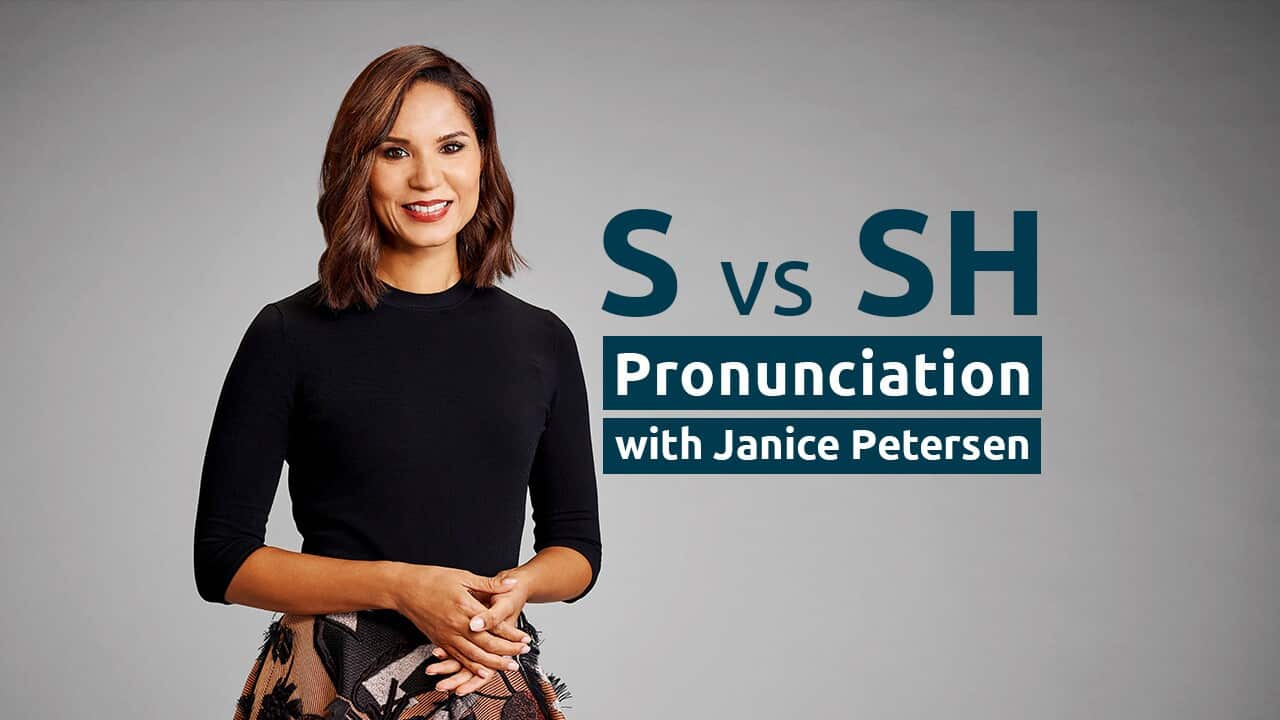Key Points
- Learning Objectives: understanding stress patterns and practicing the difference between numbers ending in -teen or -ty
- L1 Influence: many language learners struggle with ‘teen’ and ‘ty’ because English is stress timed, not syllable timed.
- Text for Practise : I went to the store and bought thirteen tomatoes for thirty dollars, fourteen fish for forty dollars, fifteen forks for fifty dollars, etc.
- Minimal Pairs : ‘teen’ is the stressed syllable - it is long and clear and the /t/ is clearly pronounced: thirteen, fourteen... ‘ty’ is the unstressed syllable- it is short and quick and the ‘t’ is pronounced /d/: thirty, forty, fifty...
This lesson suits all learners looking to improve their pronunciation.
Transcript:
(Note: This is not a word-for-word transcript)
Hi. I’m Janice Petersen from SBS World News and I’m here to help you improve your English pronunciation.
I’ll explain how to make sounds that can be tricky to distinguish and also give you some ways to practice them.
Pronunciation – with SBS Learn English and me, Janice Petersen. Let's start!
Last week my friend Jenny went to get a haircut. She asked the price, and she thought the hairdresser said “sixteen”, what a bargain!
But when she got to the cash register, she found out it was actually “sixty”. What a shock!
Jenny’s problem was that she had trouble hearing the difference between numbers that end in ‘teen’, like ‘sixteen’, and numbers that end in ‘ty’, like ‘sixty’.
Today we’re going to look at those sounds and work out the difference.
First, let’s talk about syllables. A syllable is a single sound that has a vowel.
For instance, ‘sixteen’ has two syllables, ‘six’ and ‘teen’ so does ‘sixty’: ‘six’ and ‘ty’.
The word ‘Australia’ has four syllables: Aus-tra-li-a.
Many languages like Arabic, Mandarin, Cantonese, and Spanish are syllable timed.
In a syllable timed language, each syllable has the same length. But English is different.
English is stressed timed. This means that some syllables are longer and some are shorter..
But how do you know which syllables to make long and which ones to make short?
Don’t worry, let’s go through some examples and it will become easier to understand.
Have a listen to these words: thirteen, fourteen, fifteen, sixteen. The second syllable ‘teen’ is long and clear. It’s the stressed syllable.
Try listening again and say the words with me:
- thirteen
- fourteen
- fifteen
- sixteen
Okay, this time have a listen to these words: thirty, forty, fifty, sixty.
This time the first syllable is long and clear. The second syllable ‘ty’ is shorter, that means it is unstressed.
Have another listen and say the words with me:
- thirty
- forty
- fifty
- sixty
Knowing these stress patterns can help you hear the difference between words that sound the same.
Let’s put it all together and have some fun with it.
I’m planning my party list. If you want, you can say it with me. I’m going to buy:
- thirteen tomatoes and thirty toys,
- fourteen fish and forty falafels,
- fifteen forks and fifty flowers,
- sixteen sultanas and sixty shells
It’s going to be a crazy party! And the list isn’t even finished.
Helping me today are learners from AMEP at TAFE NSW St Leonards.
- seventeen tomatoes and seventy toys,
- eighteen fish and eighty falafels,
- nineteen forks and ninety flowers
Thanks guys! How would you finish off this list?
So, next time you go to the hairdresser, remember that the ‘teen’ in ‘sixteen’ is stressed and the ‘ty’ in ‘sixty’ isn’t.
You’ll be fine, and don’t worry about Jenny; her hair looked great even if it was more expensive than she thought it would be.
CREDIT
Thanks to our educational consultant, Natalie Oostergo and the students from St Leonards.
More Pronunciation Practice

MiniPod: S vs SH Pronunciation Practice













